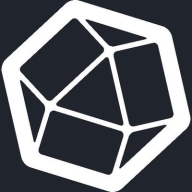


Find out what your peers are saying about MongoDB, ScyllaDB, Microsoft and others in NoSQL Databases.


InfluxDB is open-source software that helps developers and enterprises alike to collect, store, process, and visualize time series data and to build next-generation applications. InfluxDB provides monitoring and insight on IoT, application, system, container, and infrastructure quickly and easily without complexities or compromises in scale, speed, or productivity.
InfluxDB has become a popular insight system for unified metrics and events enabling the most demanding SLAs. InfluxDB is used in just about every type of industry across a wide range of use cases, including network monitoring, IoT monitoring, industrial IoT, and infrastructure and application monitoring.
InfluxDB offers its users:
InfluxDB Benefits
There are several benefits to using InfluxDB . Some of the biggest advantages the solution offers include:
Reviews from Real Users
InfluxDB stands out among its competitors for a number of reasons. Two major ones are its flexible integration options and its data aggregation feature.
Shalauddin Ahamad S., a software engineer at a tech services company, notes, “The most valuable features are aggregating the data and the integration with Grafana for monitoring.”
MongoDB is a flexible and scalable NoSQL database solution that efficiently handles both structured and unstructured data. It is known for its ease of use, JSON capabilities, and efficient data handling, making it ideal for developer-friendly environments.
MongoDB stands out with features like sharding, geospatial indexing, and its open-source nature. Users find it fast and appreciate its seamless integration into different applications. Despite being powerful, it remains straightforward to set up and use, bolstered by a clustering and aggregation framework that enhances its functionality. While generally appreciated for its cost-effectiveness and broad application compatibility, there is room for improvement in security, enterprise integration, and the creation of more robust training and documentation resources. Enhancing performance and adding support for traditional relational database concepts could also prove beneficial.
What are MongoDB's most important features?MongoDB finds widespread application across industries like healthcare, logistics, and telecommunications. It efficiently powers IoT platforms, data analytics, and document management systems. Its schema flexibility and JSON storage capabilities make it ideal for real-time processing and multi-server databases, essential for handling large-scale data volumes in modern applications.
Neo4j is the graph database solution allowing the analysis of complex relationships and patterns in data, leading to better decision-making and improved business processes. The graph database offers easy data integration from multiple sources, providing a more comprehensive view.
The most valuable aspect of a graph database is its performance and response time, as it does not use the join function and only has nodes and raw data. Overall, Neo4j, as a global first-ranking solution, has helped organizations become more efficient and effective in data analysis and decision-making processes.